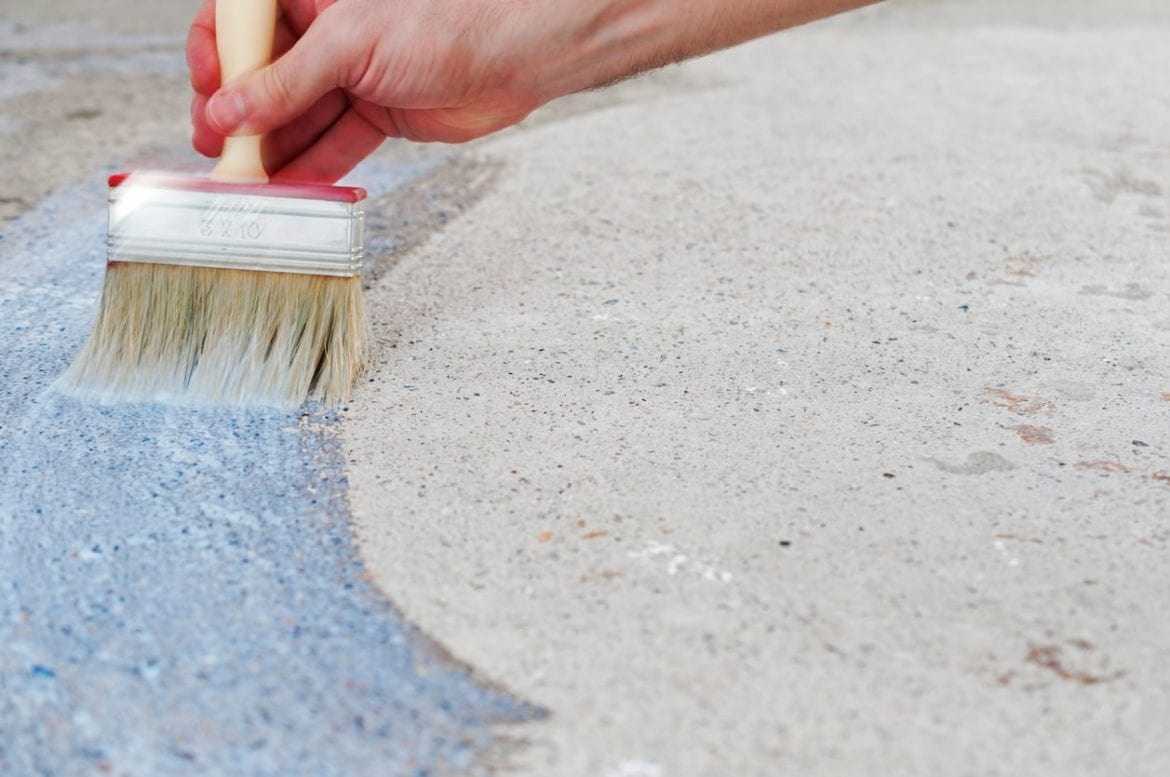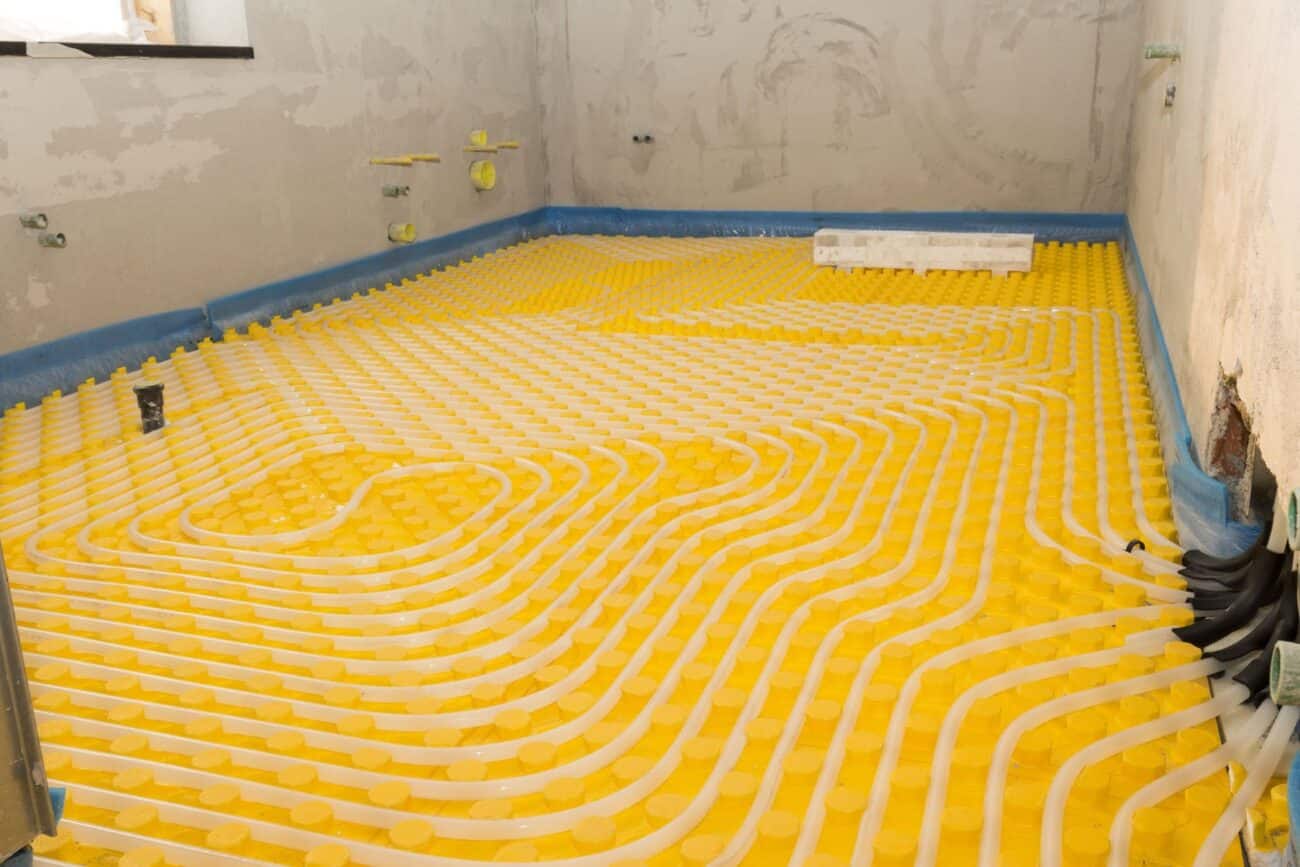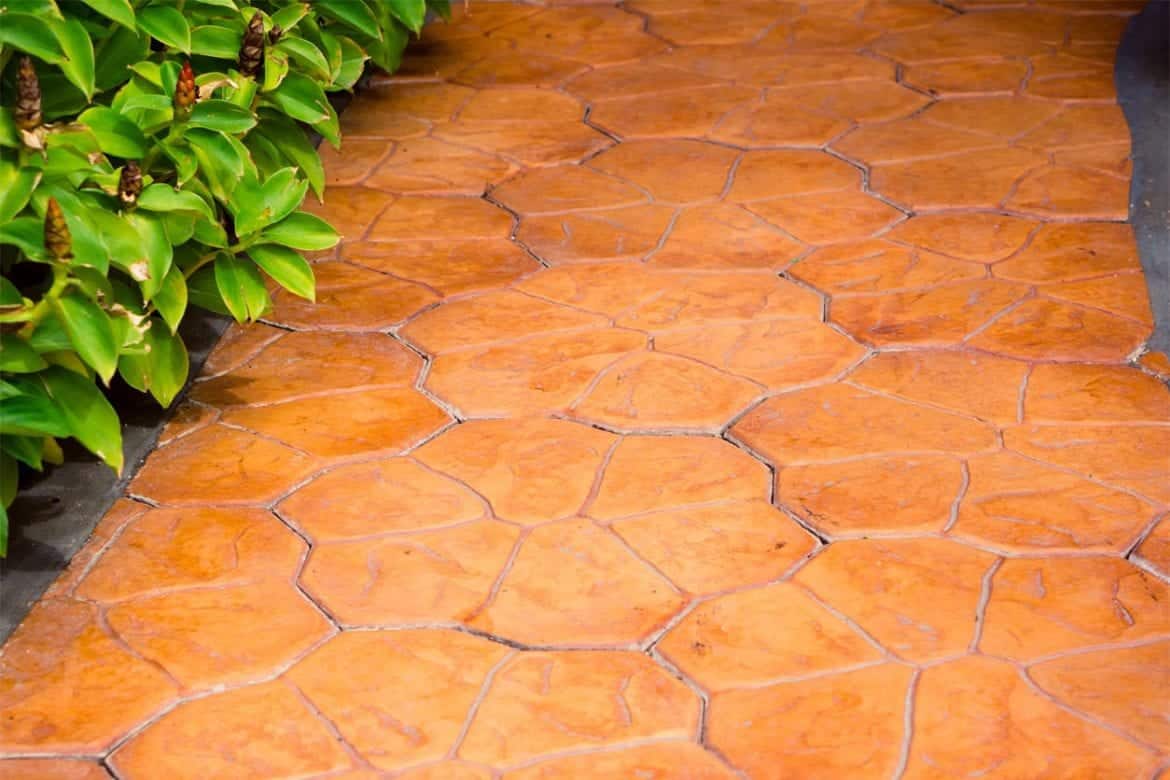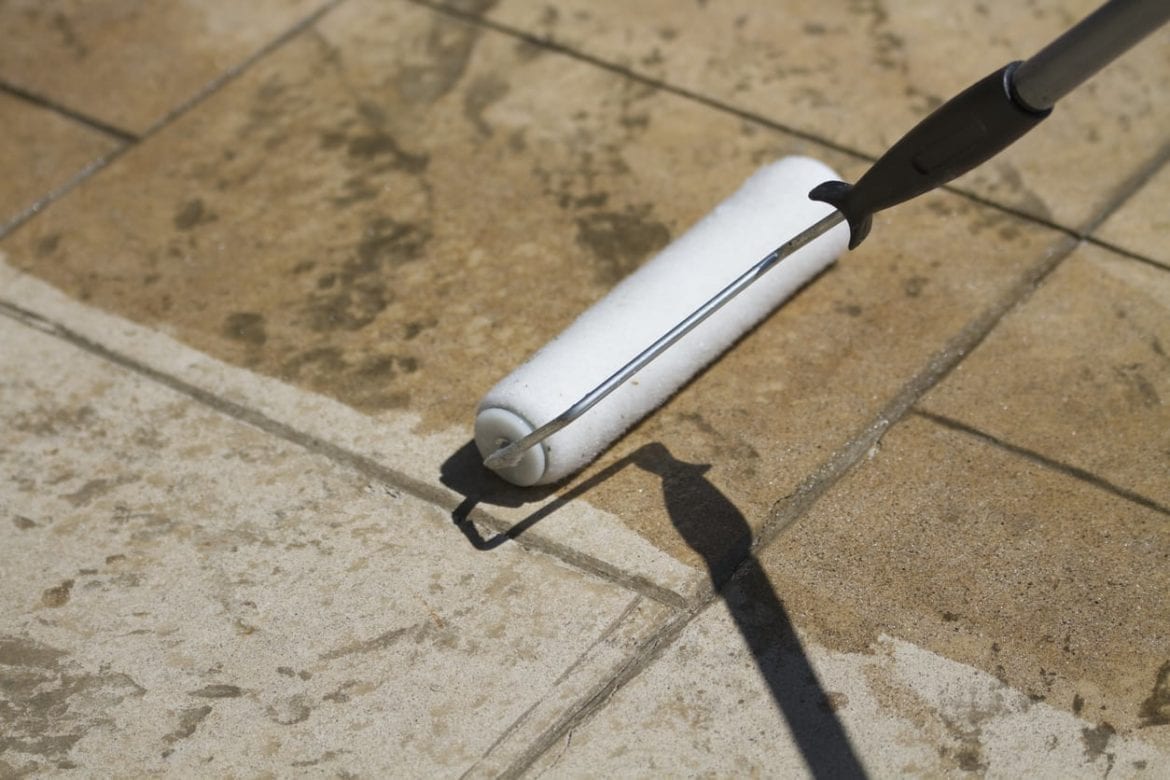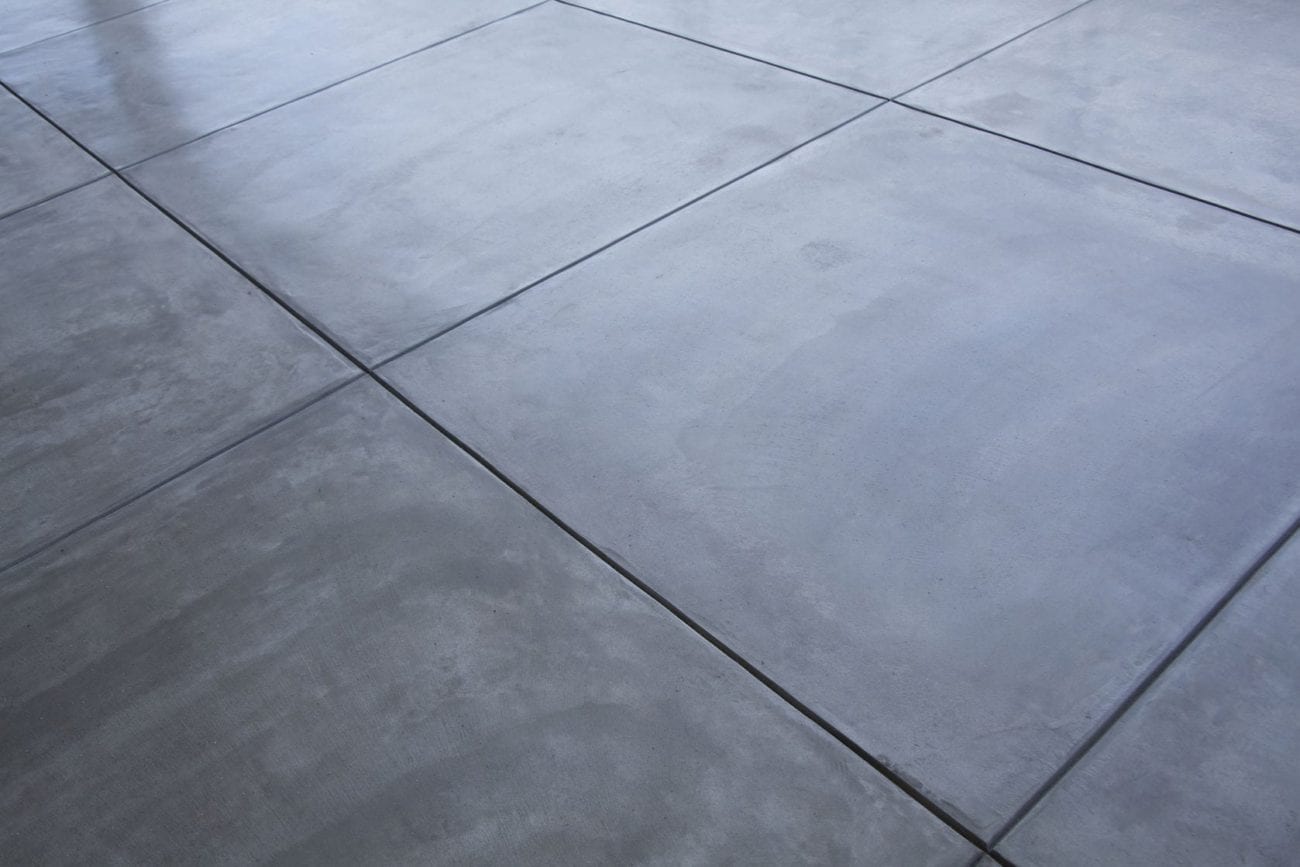The longevity of concrete sealers is dependent on a number of factors. First being the type of concrete sealer, meaning its composition – acrylic, epoxy, urethane, silicate. On average acrylic sealers tend to need reapplication within a year or two of being applied. Since they are topical sealers adhering to the concrete they are prone to traffic which causes flaking, peeling and bubbling. There are some excellent acrylics out there, mainly water based acrylics, that will last up to 5 years before needing to be re-applied. Since water based versions do not leave a high gloss shine there is less risk of the aforementioned issues. Solvent based acrylics may peel, flake and decomposed quicker at signs of UV rays and traffic.
Epoxies and urethanes if applied to a clean surface with a good surface porosity (using an epoxy primer and urethane top coat) will adhere and last up to 10 years. Silicates on the other hand are penetrating densifiers which have no risk of peeling, flaking or bubbling. Through a chemical reaction they form a denser, harder, stronger slab which is why many companies offer lifetime warranties on these products. If your concrete is at no risk for water issues and you use a silicate densifier to seal the concrete you should not need to reapply or seal it.
Our Take: Look for companies like Kretetek and Stone Technologies, offering warranties on their products so you will be covered if their products do not live up to their claims.
With the cost of natural gases and oil rising in many parts of the country, upcoming winters promise to present a difficult choice between heating your home and living somewhat uncomfortably while wearing many layers. However, it doesn’t have to be that black and white of a decision. A newer phenomenon among those home and business owners with concrete floors is radiant floor heating.
Radiant floor heating is a method of heating concrete floors, walls, and other surfaces with tubes running underneath the concrete. Concrete can get very cold, especially in the winter. Anyone who has walked over a bare concrete floor in the winter knows that feeling of iciness that permeates through the soles of your feet to creep through the rest of your body. Radiant floor heating offers an ingenious and cost effective way to heat up those floors while saving you money on your heat, electric, and gas bills.
While it is easier to install a radiant floor heating system before you pour your concrete slabs, it’s not impossible to add to a pre-existing concrete floor. If you haven’t yet poured the concrete, however, the process is as simple as installing a network of small tubes designed to carry either hot water or electrical current under your floors, which leads to them heating up and spreading that heat (or having that heat radiate, which is where the name comes from) throughout the rest of the concrete slab.
If you have a pre-existing concrete floor to which you want to add a radiant floor system, you simply have to add thin electrical current system mats under another layer of cement or gypsum overlay. Okay, maybe that isn’t so simple, but it certainly isn’t impossible. This method will add a radiant floor heating system to your home without significantly raising the height of your concrete floors.
Whichever route you go, a radiant floor heating system is a great, cost effective way to heat otherwise freezing concrete floors and walls throughout the colder months. It is not even necessarily just a fix for those living in places with harsh winters. Concrete is, by nature, a cold material, even in the summer or in warmer climates. If you or members of your family are sensitive to cold, it would be a good idea to look into radiant floor heating systems as a potential fix.
When you have concrete, and you know that you have to seal it with a concrete sealer, the next step is figuring out which sealer to purchase. Once you have done all of your research and purchased a sealer that shipped to your home – no problems – you are now ready to start the application process. If you ready all of your materials, clean the concrete, acid etch the surface, and wait the requisite amount of time, you just have one more thing to make sure of: the temperature.
Concrete sealer is a chemical mixture that contains particles of chemical sealant suspended in either water or a chemical solvent. Either way, the sealers have to be stored and applied at certain temperatures to be at their most effective. To begin with storage, concrete sealers should not be stored frozen, nor should they ever be at risk of freezing. A frozen concrete sealer will feature less effective particles of chemical sealant, rendering if significantly less effective when it actually is applied (though you may not be able to tell the difference). As many concrete sealers are water-based, which are undoubtedly better concrete sealing options, they are also at risk for freezing (you still should not allow a solvent-based product to freeze either, though it will be more difficult to make happen).
Similarly, there are some general temperature guidelines to keep in mind when applying the concrete sealer to the concrete slab as well. First off, the surface of the concrete and the environment of the room in which the concrete sealer is being applied should not dip below around 50 degrees Fahrenheit. Below 50 degrees Fahrenheit, the concrete is too cold to allow the concrete sealer to penetrate or bond to the surface effectively, depending on which type of sealer you are using. The concrete and the room in which it is being applied should not exceed approximately 90 degrees Fahrenheit either, nor should it be applied in direct sunlight. If you find yourself with a surface that is too hot, wait for a cooler day or wait until nightfall. Similarly, if you have a surface that is too cold, try using a space heater to heat up the (for example) basement to a more agreeable temperature before applying the concrete sealer. While this may some extra effort, the concrete sealer will penetrate or adhere better, which is better for the concrete in the long run.
When purchasing concrete sealers, the market can be somewhat cloudy. It is not apparent enough to just understand what you need to look for, nor is it clear enough to just purchase concrete sealer without any research. The best way to go about the process is to perform a substantial amount of research before buying a product. You want to make sure you know what exactly you want to accomplish with your particular project, as well as what steps you need to take to complete it. Once you have this solidly in mind, you should go online and research the best concrete sealers for your particular project.
Once you have found the best type of sealer (i.e. penetrating, surface, silicate, acrylic), you want to start researching manufacturers. Manufacturers of concrete sealer are different from the distributors of concrete sealer. In this field, manufacturers typically do not distribute their own concrete sealer. Some of the weaker varieties will do so to save money, but the higher quality manufacturers don’t tend to concern themselves with directly selling their products.
Thus, you have a most manufacturers simply producing the concrete sealer products to be distributed by a distributor. Distributors can be large retail entities like Home Depot, or they can be smaller online services. These online services are a much better choice if you want to find a truly high quality concrete sealing product. Concrete sealers vary so much in usage and type that the big retail chains cannot stock all of the necessary varieties. They simply keep a couple of brands of weaker material on hand to sell to the unknowledgeable consumer. However, their online retail has some more choice, making their websites a better bet. Despite this, you should still consider purchasing from a third-party retailer online that can offer you some of the stronger and more specific concrete sealing offerings.
In sum, the manufacturers of concrete sealer research and develop their concrete sealers, making sure they are optimally primed to work to their full potential. Then, once the products have been developed and tested, they are produced in large volume before being sent out to various distributors. These distributors sell the manufactured product for a small fee, leading to a symbiotic relationship where all participants, including the consumer, are happy.
Concrete has long been recognized as a sort of wonder material. From the ancient Egyptians to the ancient Romans, concrete has been a staple in building and construction for thousands of years. Throughout that period of time, concrete has gone through many transformations, evolving and changing with every new technological and chemical advancement. One of the most recent advancements was the discovery and development of a new, self-healing flexible concrete by researchers at the University of Michigan.
Traditional concrete is often beset with wide, gaping cracks that threaten and destroy the material’s structural integrity. Wear, abrasion, and the elements all play a role in concrete’s destruction, and the image of the rundown, cracked sidewalk with weeds growing through are fairly commonplace. However, the new concrete material is designed to avoid these gaping cracks, and even can be fixed and repaired without any human effort.
The new concrete works by bending with the pressure caused by such problems as freeze/thaw cycles. Instead of being so rigid as to crack in a large, gaping manner, the concrete will crack much more subtly throughout the material. This is a natural benefit because the concrete is also designed to heal itself. With exposure to water and carbon dioxide, the concrete can actually mend its own cracks without any human interference. Instead of spending time and money on various attempted fixes for your cracked concrete, you will now only have to wait for the next rainstorm for your concrete to heal itself.
The new concrete substance bends rather than cracks, which preserves its structural integrity enabling it to heal itself without recourse to heavy machinery and human labor. In fact, the concrete has been shown to repair itself back to its original level of strength with only a few drizzly days. The biggest current negative to the use of the material is its unsurprising price tag. The new concrete can cost up to three times more than traditional concrete, which ensures manufacturers of concrete sealer will remain in business despite the new advancements. While self-healing concrete is an incredible discovery, it hardly is a cost-effective alternative to construction professionals and homeowners who just want to protect their concrete.

